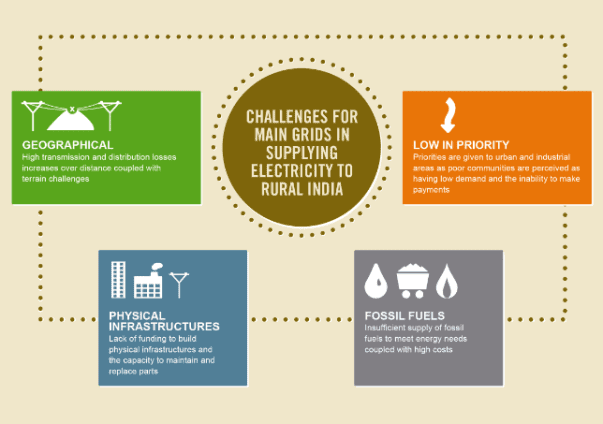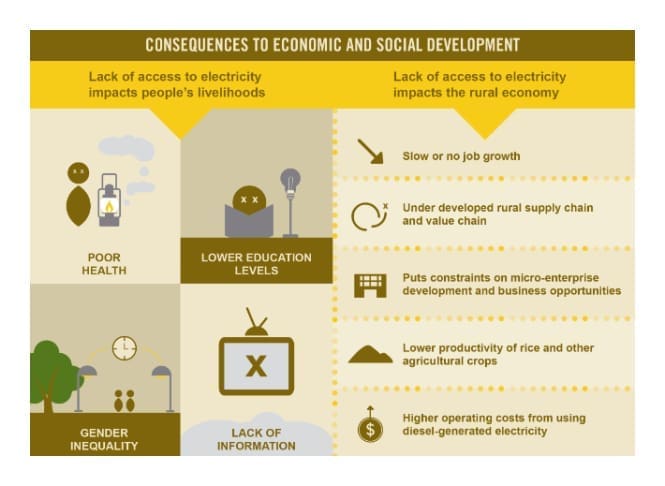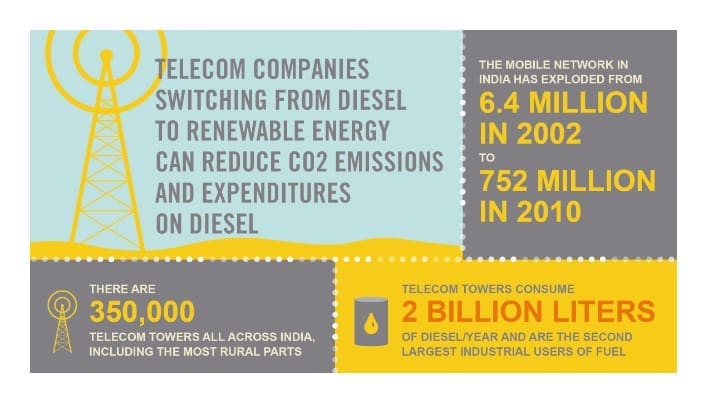
| SHARE THIS | “Now is the time for an energy revolution in India.” |
In the 21st century, we know that with power comes progress. We know that electricity can increase household per capita income by 39 percent. Businesses are able to operate at higher levels of productivity. Farmers can run irrigation systems and processing machines that improve their yields. Electricity enhances safety, learning, and has less impact on the environment than dirty diesel fuel.
This is why we are launching The Rockefeller Foundation’s Smart Power for Rural Development initiative, a $75 million initiative to light 1,000 villages in India and impact the lives of one million people in three years.
We believe that now is the time for an energy revolution in India. Here are four reasons why:
First, demand. According to the International Energy Agency, energy demand in India is expected to more than triple in the next three decades.
Second, a convergence of new technologies and innovations. For example, the proliferation of mobile usage is dramatic and opens up countless of opportunities for innovation.
Third, is the rise of entrepreneurs who are looking for new opportunities and new markets and impact investors who want investments that generate social and environmental impact, as well as a financial return.
Finally—there is a commitment from the highest levels of leadership in the Indian government.
Together with our partners in India, we have developed an innovative model of delivering clean energy via decentralized minigrids—The Smart Power model.
It is not the technology itself that is the big innovation, but rather it is a market innovation. We bring together of three types of customers:
First, an anchor tenant, such as telecommunications companies that need electricity to run their mobile phone towers and are currently relying on expensive and environmentally polluting diesel.
Second, small enterprises, such as carpenters or agri-businesses, that need electricity to operate and grow, and will pay for reliable electricity.
And third, villagers who can pay only some small amount for electricity, which is all they need.

In this model, an anchor tenant, for example a telecommunications company operating local cell towers, would assure a baseline level of demand, making it profitable for an energy services company operator to build a power plant.
With the anchor tenant in place, the plant operator can sell electricity to other local businesses and to households, thus building demand for power, and benefiting new and future local businesses and households.
We have seen through our pilot projects how the provision of power opens up opportunities for economic development in rural villages: creating more jobs and new industries, increasing productivity, and improving access to education.
To help drive this initiative forward, The Rockefeller Foundation is partnering with a new company—Smart Power India—led by CEO Jaideep Mukherji. Smart Power India will work with the partners and sectors that will make the Smart Power model both sustainable and scalable including energy service companies, private sector partners, investors, NGOs, communities, and the Indian government.
While our immediate goal is to light 1,000 villages—this is only the beginning. Ultimately, we want to prove that this model is viable not only in India, but in regions around the world where energy poverty persists.
We believe India can lead the world in solving the problems of energy poverty and unleashing greater opportunities for its people.



Leave a comment